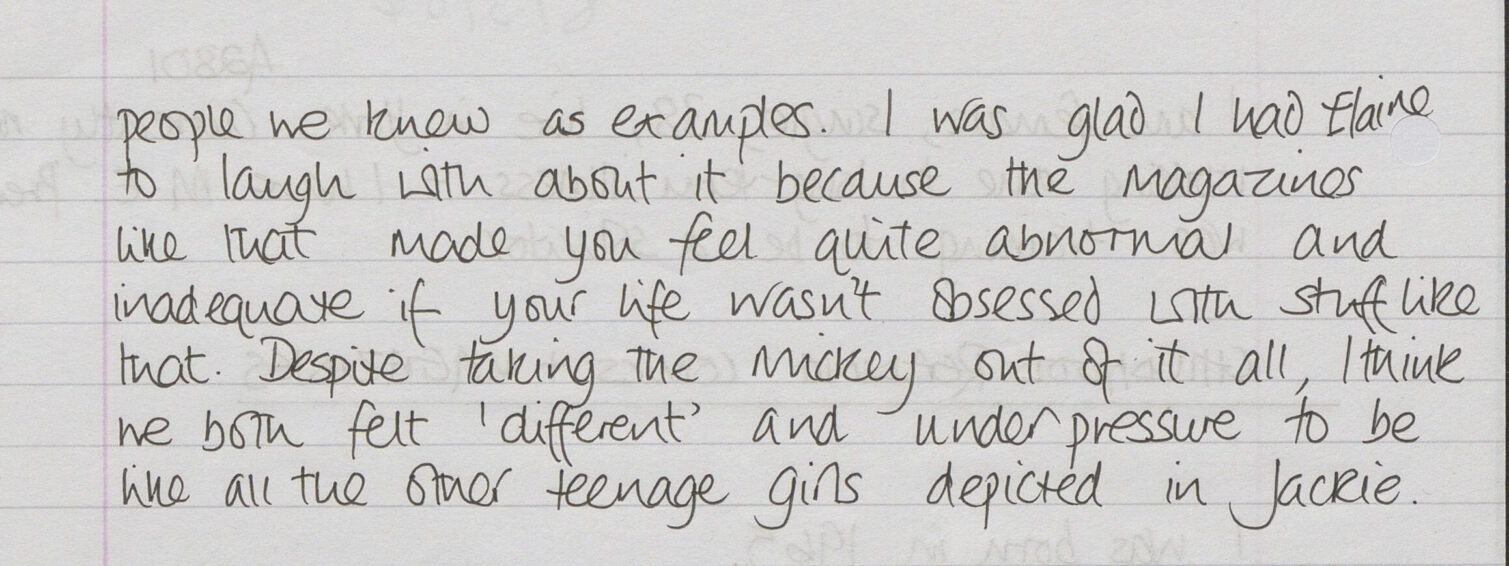Comics and Gender in the Mass Observation Project
So far March has seen World Book Day, International Women’s Day and the publication of the final module of Mass Observation Project 1981-2009, which focuses on the years 2000-2009.
The Mass Observation Project documents the social history of Britain through the written responses of volunteers (observers) to directives which are sent out several times a year and this digitised collection allows all the responses to be fully searchable for the first time.
With these three celebrations fresh in my mind I thought it would be interesting to explore the responses from women to the 2003 directive on Childhood reading: comics and magazines. The directive asks various questions, including which comics the observer read, who purchased them and who they read with. It also asks the observer whether some comics appealed to girls and some to boys and whether this reflected their experience.

Image © Mass Observation Archive Trustees. Further reproduction is prohibited without permission.
This reminded me of a recent trip to a comic shop with an old friend. She had fond memories of visiting as a teenager about 20 years ago, but I could barely remember the shop and on arriving realised that I had always ignored it, reading the dark exterior and tightly packed window as ‘for boys’. I was interested to see how our different experiences of comics were reflected in the responses from women in Mass Observation Project.
Many responses mention The Dandy and The Beano, always listed together, as something read at a younger age, and these seem to appeal to all readers. However, the women responding often pick out female characters as their favourites:
C2981 (born in 1981) writes “I suppose my liking for a character like Minnie the Minx rather than the male equivalent of Dennis the Menace may have been because as a girl I identified with her more. But as a general rule, I didn’t really like ‘girl’s’ comics like Bunty … I read them when I was waiting for my mother in the library, but I definitely didn’t seek them out. Comics aimed at girls were often less interesting than those aimed at boys.”

Image © Mass Observation Archive Trustees. Further reproduction is prohibited without permission
Divisions more clearly emerge in the titles directed at older girls and boys. Boys’ titles are identified as featuring adventure stories, superheroes and articles about sports. What is interesting is the attitudes taken to the content promoted to girls. The themes of make-up, fashion and heterosexual relationships emerge. Observers take different views of this with some enjoying it and feeling access to this is beneficial. For example, P3020 (born in the 1980s) recalls “These used to be great fun to read, problem pages, make-up and fashion were my favourite sections. … I think these magazines were good – it provided all the information that you would not have got elsewhere.”
However, others showed discomfort with this either dismissing it as trivial or alienating. A2801 (born in 1965) says “We used to read ‘Jackie’ magazine…. I have to say we laughed a lot at what was in it and didn’t take it too seriously…. It was obsessed with make-up and boys, neither of which we were very interested in, but we knew people who read it religiously and for whom those topics were central to their existence.”… “I was glad I had Elaine to laugh with about it because the magazines like that made you feel quite abnormal and inadequate if your life wasn’t obsessed with stuff like that”.

Image © Mass Observation Archive Trustees. Further reproduction is prohibited without permission.
I found one response that closely echoed my feelings about the never-before-visited comic shop. N3000 (born in the 1970s) recalls: “I always saw some of the superhero-type comics as being for boys, and the darker colours and jagged pictures put me off anyway.” However, the renaissance of the superhero genre since the 2000s might well see current responses moving away from this distinction, with material from Marvel and DC Comics being hugely popular with men, women and children.
About the collection
Mass Observation Project 1981-2009 is out now.
Recent posts

The blog highlights American Committee on Africa, module II's rich documentation of anti-apartheid activism, focusing on the National Peace Accord, global solidarity, and student-led divestment campaigns. It explores the pivotal role of universities, protests, and public education in pressuring institutions to divest from apartheid, shaping global attitudes toward social justice and reform.

This blog examines how primary sources can be used to trace the impact of young voices on society, particularly during pivotal voting reforms in the UK and the US. Explore materials that reveal insights into youth activism, intergenerational gaps, and societal perceptions, highlighting their interdisciplinary value for studying youth culture, activism, and girlhood across history.
